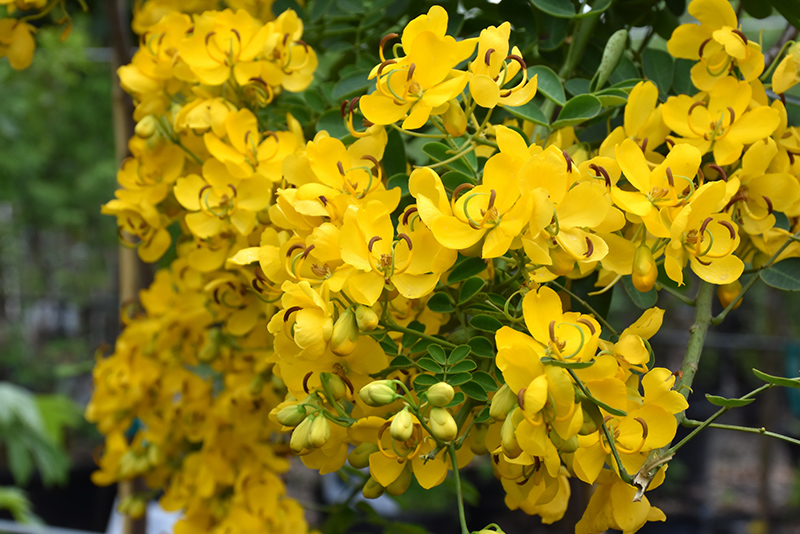Plant Finder
Height: 15 feet
Spread: 15 feet
Sunlight:
![]()
![]()
Hardiness Zone: 9a
Other Names: Easter Senna, Climbing Cassia, Valamuerto
Description:
A large shrub or small tree with small oval, dark green compound leaves; gracefully arching branches are covered with clusters of yellow flowers in spring, then sporadically all year; prune to shape as a small accent tree, and to maintain density
Ornamental Features
Easter Cassia features showy corymbs of yellow buttercup flowers at the ends of the branches from early spring to mid fall. It has attractive dark green evergreen foliage. The small oval compound leaves are highly ornamental and remain dark green throughout the winter. The fruits are showy brown pods displayed from mid summer to early winter.
Landscape Attributes
Easter Cassia is a multi-stemmed evergreen shrub with an upright spreading habit of growth. Its average texture blends into the landscape, but can be balanced by one or two finer or coarser trees or shrubs for an effective composition.
This shrub will require occasional maintenance and upkeep, and should only be pruned after flowering to avoid removing any of the current season's flowers. It is a good choice for attracting birds, bees and butterflies to your yard, but is not particularly attractive to deer who tend to leave it alone in favor of tastier treats. Gardeners should be aware of the following characteristic(s) that may warrant special consideration;
- Invasive
Easter Cassia is recommended for the following landscape applications;
- Mass Planting
- Hedges/Screening
- General Garden Use
Planting & Growing
Easter Cassia will grow to be about 15 feet tall at maturity, with a spread of 15 feet. It has a low canopy with a typical clearance of 2 feet from the ground, and is suitable for planting under power lines. It grows at a fast rate, and under ideal conditions can be expected to live for approximately 15 years.
This shrub does best in full sun to partial shade. It is very adaptable to both dry and moist locations, and should do just fine under average home landscape conditions. It is not particular as to soil pH, but grows best in sandy soils. It is somewhat tolerant of urban pollution, and will benefit from being planted in a relatively sheltered location. This species is not originally from North America, and parts of it are known to be toxic to humans and animals, so care should be exercised in planting it around children and pets.





